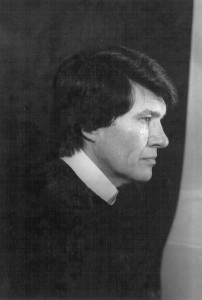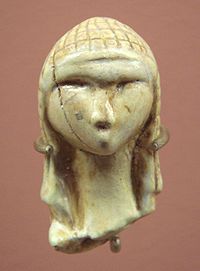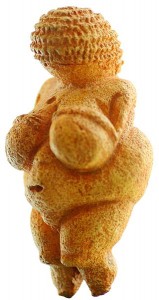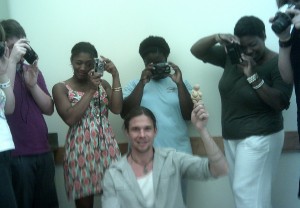
Venus! The very name conjures up images of the great Roman goddess of love, beauty and prosperity. She was a popular goddess among the Romans, just as had her sister goddess, Aphrodite, been for the Greeks. Ritualistic offerings were plentiful, provided by Roman women, especially those soon to be married. Even Frankie Avalon appealed to Venus to be successful in love!
The Aphrodite of Melos (Venus di Milo) is perhaps the best-known of the Venus figures. Pompeii also has a striking image of Venus on a Seashell, located in the ruins of the Casa di Venus. True to form and function, Venus figures always reflect the style and ideal of the culture in which they are created. And the Venus figurine has been a part of culture long before the ancient Greeks and Romans.

On a visit to Vienna, my wife and I spent an unforgettable Sunday. The morning found us at the Musikverein for a recital of Mozart sonatas by German violinist Anne-Sophie Mutter. Following the concert, we walked down the street to the Hotel Sacher for a Sacher Torte and Viennese coffee. You haven’t truly experienced chocolate until you have eaten a Sacher Torte! We walked off the calories back up to the Museum of Natural History. Our purpose there was to see the Venus of Willendorf. She truly gave us the culmination of a perfect day.
Willendorf is a small village on the Danube, near Krems. It is one of the most important sites of Paleolithic or Old Stone Age discovery in Austria. Archeological research was initiated by the construction of the rail line, Mauthausen-Grein-Krems. On 7 August 1908, excavations at the site Willendorf II, level 9, yielded a small female statuette made of limestone.

The Venus of Willendorf is the creation of a skillful artist. All body details essential to the female figure have been carefully designed. Similar finds at other nearby places indicate the existence of a highly developed art tradition represented by more than 100 figures. All have common main features: omitted face, making them impersonal looking symbols for a common purpose; tapering legs with no feet, indicating that they may have been stuck in the ground; and exaggerated female traits realistically presented while other parts of the body are reduced to a minimum.
I have taught the Venus of Willendorf to art history students for many years. They have seen slides of the figurine and studied her features in their textbooks. I am convinced, however, that no amount of teaching can substitute for the experience of seeing her. She lies so peacefully in her glass vitrine, emitting the same powerful image that she has for thousands of years. She forms a strong and viable link for us with her past, and thus our own past. Her presence is a testimony to the successful continuance of the human race. And in all of her distorted characteristics, she is beautiful because she represents something far deeper and far greater than her tiny image.
While most students will not have had the opportunity to visit such places and see the art works, the teacher who has had that experience can enhance the learning environment. After all, a major goal of academia is to bring the subject alive to the student. The ancient art must come into the present reality of the student’s life and work. I was talking recently with a colleague and friend, Dr. Jerry Sanson, in the LSUA history department about this very thing. He recounted an experience in a Louisiana history class. The students were studying the Earl Long era. In the midst of their discussion, an elderly gentleman who takes classes related that he had known Long and had spoken with him many times. He began to tell the students stories of how it really was during the Long era and of the unique (and notorious!) personality of Earl Long. History came alive for those students. They were in the present reality of that time through the memories of one who had been there. This type of learning cannot be duplicated by any textbook. You simply cannot teach a person to swim by giving them a book!










